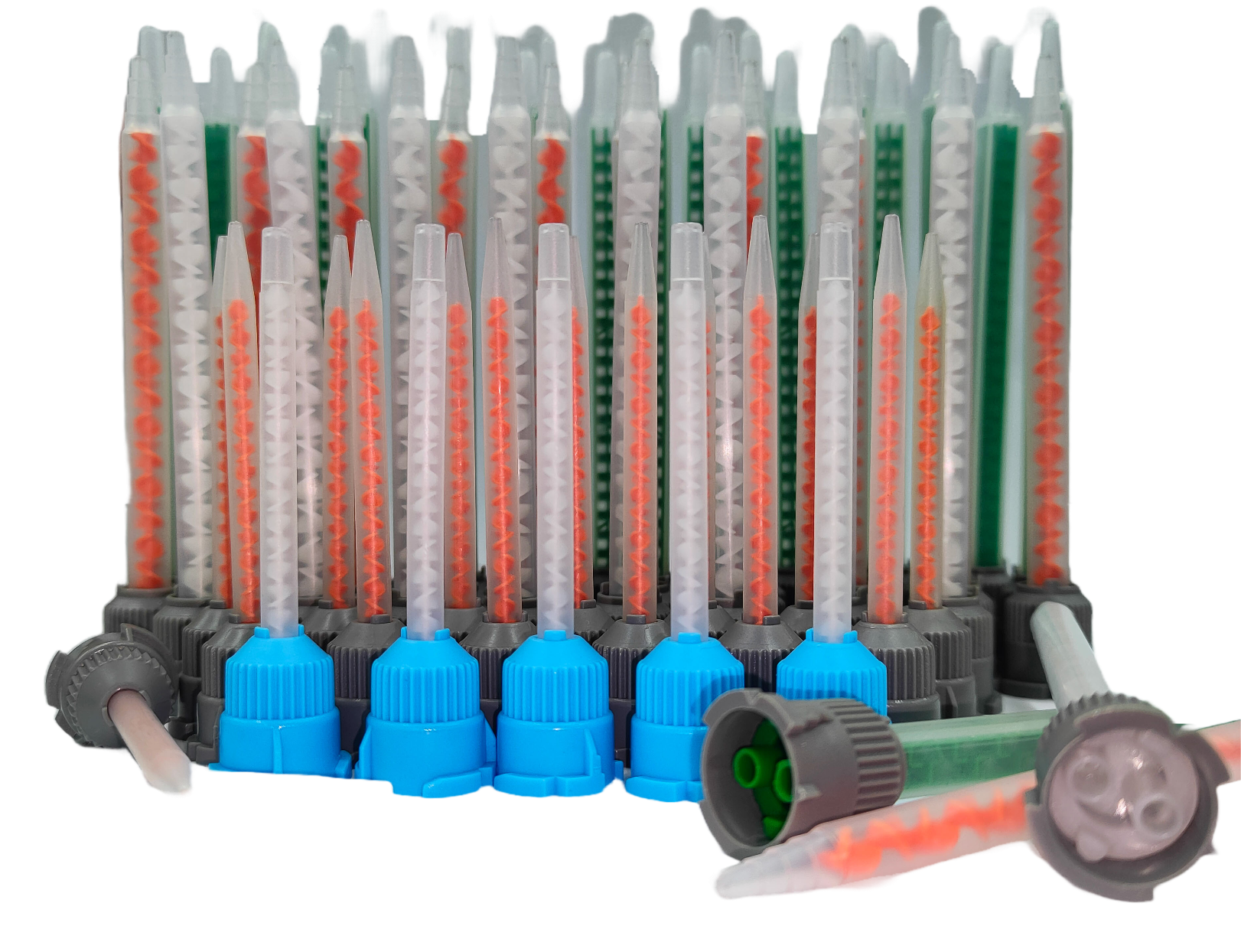The process of mixing epoxy and hardener is a crucial step in unlocking the full potential of epoxy resin. Whether you’re working on DIY projects or industrial applications, achieving a proper mixture is essential for optimal curing and durability. In this article, we will explore three common methods for mixing epoxy and hardener: manual mixing, mechanical mixing, and the use of plastic mixing nozzles. We will discuss the pros and cons of each approach and provide valuable tips for effective mixing. Let’s delve into the art of epoxy and hardener mixing!
Manual Mixing
This approach involves combining epoxy resin and hardener manually using simple tools such as stir sticks or spatulas. It offers accessibility and control, allowing you to adjust the mixing process as needed. Manual mixing is well-suited for small-scale projects or applications that require precision.
Pros of Manual Mixing:
-
Accessibility:
Manual mixing is widely accessible and doesn’t require specialized equipment.
-
Control:
You have direct control over the mixing process, allowing for adjustments and ensuring a thorough blend.
-
Suitable for small-scale projects:
Ideal for smaller projects or applications where precision is necessary.
Cons of Manual Mixing:
-
Time-consuming:
Manual mixing can be time-consuming, especially for larger projects.
-
Risk of uneven blending:
Achieving a homogenous mixture requires careful attention to detail.
-
Potential air bubble formation:
Vigorous stirring can introduce air bubbles into the epoxy mixture, which may affect the final result.
Mechanical Mixing
This method involves utilizing powered tools, such as drills with mixing attachments or paddle mixers, to blend epoxy and hardener. Mechanical mixing saves time and effort, making it ideal for larger projects. It ensures consistent blending, reducing the risk of uneven distribution. However, it is important to be cautious of potential heat generation during vigorous mechanical mixing.
Pros of Mechanical Mixing:
-
Time efficiency:
Mechanical mixing methods save time and effort, especially for larger projects.
-
Consistent blending:
These tools ensure thorough mixing, minimizing the risk of uneven distribution.
-
Reduced air bubble formation:
Mechanical mixing techniques help reduce the likelihood of introducing air bubbles.
Cons of Mechanical Mixing:
-
Equipment requirement:
Mechanical mixing methods may require specific tools or attachments.
-
Heat generation:
Vigorous mechanical mixing can generate heat, potentially affecting the epoxy’s properties.
-
Cost consideration:
Investing in mechanical mixing equipment may be a financial commitment, depending on the scale of your projects.
Plastic Mixing Nozzles

These specialized tools are designed for dual-cartridge syringe systems, where epoxy resin and hardener are dispensed simultaneously. The nozzles have separate channels for each component, merging them just before exiting the nozzle. This method provides precise ratios, eliminates the need for manual mixing, and enables controlled dispensing, allowing for accurate application.
Pros of Plastic Mixing Nozzles:
-
Precise ratio:
Mixing nozzles provide a consistent and accurate ratio of epoxy resin to hardener.
-
Convenience:
They eliminate the need for manual mixing, saving time and reducing errors.
-
Controlled dispensing:
Plastic mixing nozzles allow for controlled flow, facilitating precise application.
Cons of Plastic Mixing Nozzles:
-
Limited working time:
Once mixed in the nozzle, epoxy and hardener have a limited working time before they cure.
-
Waste generation:
The use of plastic mixing nozzles may generate more plastic waste compared to other methods.
-
Dependency on syringe system:
Plastic mixing nozzles require a compatible dual-cartridge syringe system.
Tips for Effective Mixing:
To ensure successful epoxy and hardener mixing, consider the following tips:
-
Read and follow instructions:
Familiarize yourself with the manufacturer’s guidelines regarding ratios and curing times.
Cleanliness is key: Ensure all tools, containers, and surfaces are clean to prevent contamination that could affect the epoxy’s performance. -
Maintain a consistent ratio:
Use precise measurement tools, such as scales or graduated mixing containers, to achieve an accurate ratio.
-
Thoroughmixing:
Take the time to mix the epoxy and hardener thoroughly, ensuring all components are fully incorporated for a uniform blend.
-
Minimize air bubbles:
Avoid introducing excessive air bubbles during the mixing process, as they can affect the final outcome. Gentle stirring and tapping the mixing container can help release trapped air.
-
Consider temperature:
Pay attention to the recommended temperature range for mixing and curing epoxy, as temperature variations can impact the curing process.
Conclusion:
The art of mixing epoxy and hardener requires careful consideration and adherence to proper techniques. Manual mixing offers control but can be time-consuming, while mechanical mixing saves time but requires specific equipment. Plastic mixing nozzles provide convenience and accurate ratios but generate more plastic waste. By following best practices and selecting the method that suits your needs, you can achieve successful epoxy and hardener mixing, resulting in strong, durable, and visually stunning projects.
